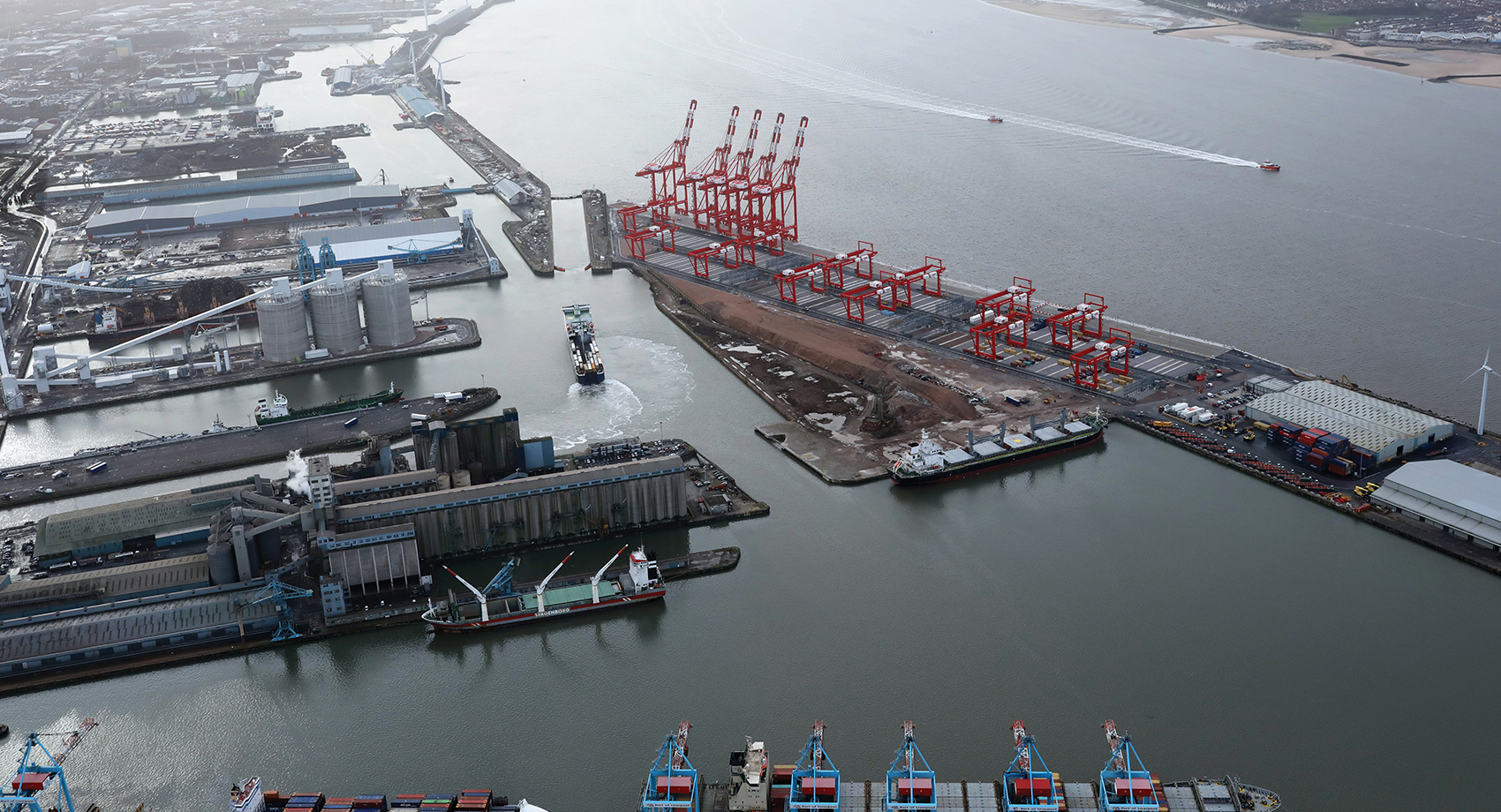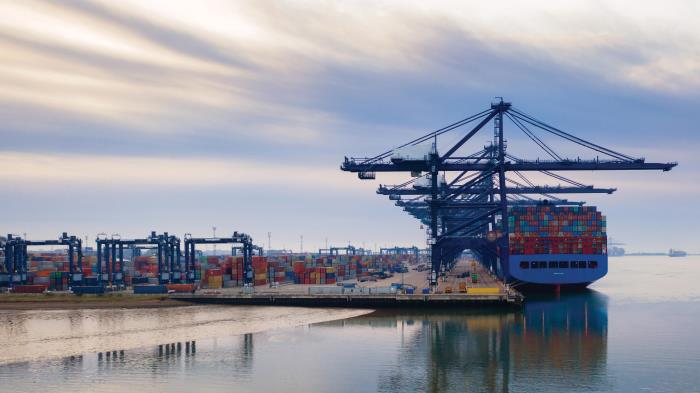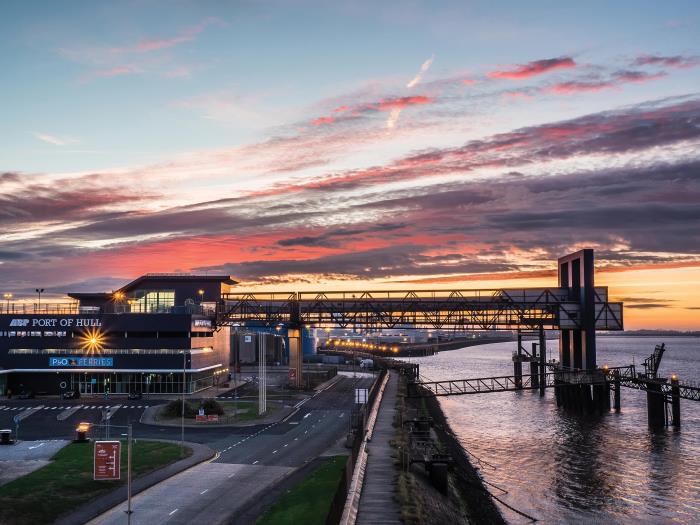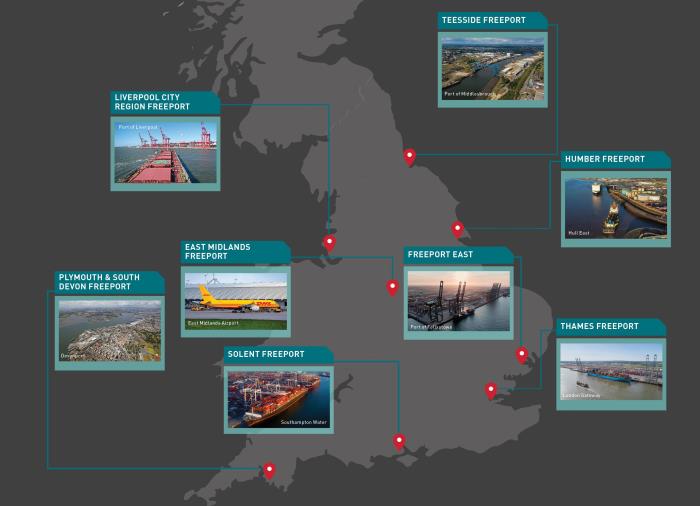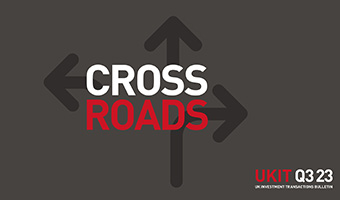The UK government has made freeports a key part of its post-Brexit, post-COVID economic strategy. While relocation and development opportunities will be created, strong tax incentives and relaxed planning policies are needed to ensure freeports’ success.
THE NEW FREEPORTS
Freeports are specially designated geographical areas, usually located at seaports, airports or railports, where a country’s normal tax and customs rules do not apply. Globally, there are estimated to be around 3,500 freeports, with some of the most prominent being in the UAE, USA, Singapore, China and Hong Kong.
Freeports have previously existed in the UK, but plans for a new wave of them were crystallised in the Spring 2021 Budget, which confirmed eight new locations in England; at the East Midlands; Felixstowe & Harwich (Freeport East); Humber; Liverpool; Plymouth & South Devon; Solent; Teesside; and Thames.
Port of Felixstowe
The UK government has also committed to establish at least one freeport in each of Scotland, Wales and Northern Ireland, subject to discussions with the devolved administrations. A deal to create two Scottish ‘green freeports’ was announced in February 2022, with the locations to be decided following a bidding process.
Under the UK government’s current model, a freeport area can extend up to 45km around a port. However, the customs and tax benefits of the freeport will only be available within specific sites, designated as either ‘customs sites’ or ‘tax sites’. Legislation has been passed establishing some of the first sites, with more expected to be confirmed at later dates.
CUSTOMS SITES
Customs duty and VAT is not applied to imported goods entering a customs site, and only becomes payable if and when goods leave the site to enter the UK market. In addition, businesses benefit from simplified customs procedures in these sites.
Customs sites provide three main potential advantages:
- Duty suspension – As companies can defer paying duty until goods leave a customs site, there are cash flow and stock management benefits, particularly for wholesalers and retailers. Goods can be imported in bulk and stored in a warehouse in a customs site, with duty only paid when goods are despatched, thus spreading out payments over a longer period of time.
- Duty inversion – Businesses with manufacturing facilities in customs sites are able to import parts and components duty-free, and then manufacture the final product on site; only paying duty on the finished item. This is particularly advantageous when the raw components would have been subject to higher tariffs than the final product.
- Duty exemption – Components can be imported into a customs site, manufactured into finished goods on site and then subsequently re-exported, with no duty being payable on either the components or the final product.
TAX SITES
A range of tax reliefs are available in tax sites, incentivising businesses to set up in them. The tax reliefs provide support at various business stages; including land acquisition; construction of premises; purchase of plant and machinery; employment of staff; and the operation of the business.
- Stamp Duty Land Tax (SDLT) relief – SDLT relief is available on acquisitions of land and buildings in a tax site. Full relief applies when at least 90% of the purchase price is for qualifying land and buildings. Partial relief applies when 10-90% of the purchase price is for qualifying land and buildings.
- Enhanced capital allowances – Firstly, an enhanced Structures and Buildings Allowance (SBA) is available on the construction or renovation of non-residential buildings; at a rate of 10% per annum over ten years. Secondly, there is a 100% first-year Enhanced Capital Allowance (ECA) on plant and machinery.
- Employer National Insurance Contributions (NICs) relief – A zero-rate of employer NICs will apply to the earnings of eligible freeport employees, up to an annual threshold of £25,000. This is only for new hires and applies for 36 months per employee.
- Business rates relief – Full business rates relief will be available to eligible businesses in tax sites in England. Relief will be available to all new businesses, and certain existing businesses where they expand, until September 2026, for five years from the point at which they first receive relief.
Port of Hull
PLANNING POLICY
The customs and tax benefits of freeports are expected to be supplemented by supportive planning policies, using the existing planning system. Importantly, there is the scope for a relaxed approach to planning to apply not just to customs and tax sites, but to extend into the freeport’s wider hinterland.
A number of planning tools are expected to be key in support of freeport development:
- Permitted Development Rights (PDR) – PD rights were extended in 2021, to allow development in connection with the operation of ports, without the need for planning consent. The change brought PD rights at seaports in line with existing rights at airports.
- Local Development Orders (LDOs) – LDOs are created by local planning authorities, and provide blanket planning consent for specific types of development in particular areas. It is expected that they will be used in freeports to authorise a broad range of permitted uses including industrial activity, freight handling, storage and distribution.
- Development Consent Orders (DCOs) – DCOs provide similar blanket planning consents to LDOs, but are issued by the Secretary of State. These will be important where a freeport covers multiple local authority areas.
BREXIT BENEFIT?
The government has heralded its freeport policy as a key part of its post-Brexit, levelling-up agenda. However, the extent to which the policy has been enabled by Brexit is debatable. There are approximately 80 freeports in the EU; and the UK was at liberty to have freeports while an EU member.
Indeed, several freeports operated in the UK at various times between 1984 and 2012, including at Liverpool, Southampton, Tilbury, Sheerness and Prestwick Airport. While these freeports saw only limited success, this has been blamed on the constraints of operating freeports within the EU and a lack of commitment from the UK government at the time.
There are crucial differences between the current freeport model and the previous examples. The old freeport model offered only customs benefits, not tax benefits, and these were limited to businesses within port boundaries. The establishment of a 45km outer boundary for the new freeport areas may give them greater scope to flourish.
The government is also providing seed funding for the new freeports, which was not the case in the past, suggesting that it is much more committed to making them a success than previous administrations. Allied to a joined-up suite of customs, tax and planning incentives, this may be vital if the UK is to compete with the most successful international freeports; many of which benefit from significant geographical advantages, being located at major cargo hubs on global shipping routes, in addition to having very relaxed regulatory regimes.
OCCUPIER & INVESTOR INCENTIVES
The incentives on offer at freeports are already attracting industrial and logistics occupiers to explore relocation opportunities. The first tax sites to be designated by legislation include locations where new warehouse developments are imminent such as Gateway 14, Stowmarket (Freeport East) and London Gateway (Thames Freeport) and these are generating strong interest.
The tax incentives of freeports may be most beneficial for new businesses at the start of leases; and companies looking to make large investments in their growth, for which the enhanced capital allowances will be a major attraction. Young, expanding, innovative companies may thus be particularly keen to base themselves in freeport tax sites.
For larger businesses, freeport customs sites may be most attractive as locations for import/export hubs. However, the new freeports are unlikely to be suitable for national distribution centres as, with the exception of the East Midlands, none of them are in the UK’s prime logistics heartlands. The tax and customs advantages of freeports will thus need to be balanced against other locational considerations.
While the tax and customs benefits of freeports are primarily aimed at occupiers, the incentives on offer will provide landlords with a range of selling points that can be used when marketing properties in freeport sites. This will give landlords a significant advantage over competing locations, and may allow them to negotiate higher rents and shorter rent-free periods.
STILL EARLY DAYS
The new wave of UK freeports is still at a nascent stage. For the freeports to be a success, the government will need to strike a balance by providing companies with meaningful tax, customs and planning benefits; while avoiding the pitfalls seen at other global freeports, some of which are seen as magnets for tax evasion and illicit financial flows.
There is also a risk that the establishment of freeports will merely displace businesses from one location to another without generating new economic activity in the UK. In order to fully prove their worth to the economy, the new freeports may need to attract businesses away from EU and other international locations.
Freeports are unlikely to completely change the landscape of the UK industrial and logistics property market, but there will be genuine benefits for many companies in specific locations. The potential advantages should be fully explored by occupiers and investors as more freeport sites are designated and a greater volume of industrial space and land becomes available in these locations.
UK FREEPORTS
- FREEPORT EAST - Tax sites have been designated at Freeport East’s three key locations; the Port of Felixstowe, Port of Harwich and Gateway 14 in Stowmarket, which is planned to be the largest logistics and business park in East Anglia.
- THAMES FREEPORT - The Thames Freeport aims to create an economic zone along the A13 corridor into East London. Tax sites have already been designated at the key locations of Ford Dagenham, London Gateway and the Port of Tilbury.
- EAST MIDLANDS FREEPORT - England’s only inland freeport is in the East Midlands, with the three main locations being the East Midlands Airport and Gateway Industrial Cluster (EMAGIC), the Ratcliffe-on-Soar Power Station site and East Midlands Intermodal Park (EMIP).
- HUMBER FREEPORT - The Humber Freeport area includes the ports of Hull, Goole, Immingham and Grimsby. The first tax sites to have been designated by legislation are at Able Marine Energy Park (AMEP) and Hull East.
- SOLENT FREEPORT - A series of tax sites have been confirmed in Southampton Water locations at Fawley, Marchwood and Redbridge; as well at Dunsbury Park, Havant. The Solent is a key gateway to European and global markets. Several sites are under consideration, with the main clusters of freeport activity expected to be at Southampton Water; Portsmouth and Southampton Airport.
- PLYMOUTH & SOUTH DEVON FREEPORT - Plymouth & South Devon Freeport will seek to harness the region’s strength in high value manufacturing, and is expected to include sites at Devonport South Yard, Langage Energy Zone and Sherford Business Park.
- LIVERPOOL CITY REGION FREEPORT - Legislation has been passed designating tax sites at Wirral Waters, Parkside (St Helens) and 3MG (Widnes). The primary customs site is planned to be at the Port of Liverpool.
- TEESSIDE FREEPORT - Tax sites have been designated at Wilton International, Teesworks East and Teesworks West. Other proposed sites include the Port of Middlesbrough, Port of Hartlepool, Teesport, Liberty Steel, LV Shipping and Teesside International Airport.
Get in touch




James Polson
Executive Director - National Head of Industrial and Logistics
Email me direct
To:
REGISTER FOR UPDATES
Get the latest insight, event invites and commercial properties by email

